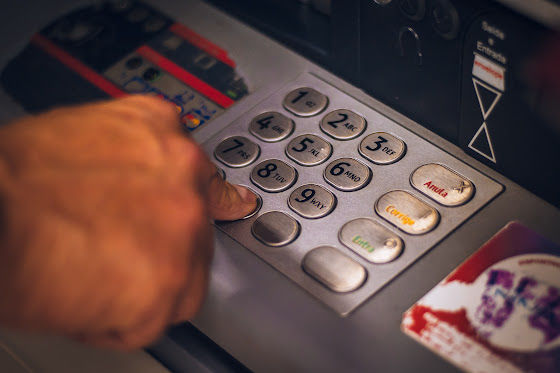Unclaimed Payroll Checks
The employee “left the building” but also left you holding a paycheck or two – what to do?

Employees leave a business for many reasons but when they also leave uncashed, now-stale checks it gunks up your payroll office’s books, and therefore the business’s financial accountings. What to do? What are your business’s obligations toward these unclaimed checks? How do we get the books cleaned up? How long are you supposed to hold onto these checks? This article walks through Montana’s unclaimed property rules and steps to take with these uncashed checks.
Note: Payroll checks are only one type of unclaimed property. Please see the state’s site for more information regarding unclaimed property.
In Montana payroll checks that are never cashed by an employee fall under the unclaimed property rules. You as the employer are the holder of these stale checks. The holder has the responsibility to determine if the stale checks meet the state’s requirements for filing an unclaimed property report and remitting them to the state.
The steps for determining if you are the holder of reportable unclaimed property:
- Determine dormancy – Different types of unclaimed property have different holding periods before they are to be remitted to the state. For unclaimed payroll checks that retention time is one year.
- Notifying property owners – After holding the stale check for one year you are required to send written notice to the property owner 60 to 120 days before reporting to the state.
- Report to the state – The business’s report to the state of the uncashed, stale check is due November 1 after the end of the state’s fiscal year, which is July 1 to June 30. Example: You have a reportable check in August 2021. This would be on the report due November 1, 2022. Reports can be submitted by paper on form UCH-1 or electronically on Montana’s state TransAction Portal or TAP site.
- Payment – With the report payment will also need to be made. Either by check mailed to the state, or through TAP and can be done when filing the report.
- Record retention – The state requires that the employer retains records on the unclaimed property for 10 years after it is reportable. Records should include the person’s name and the mailing address you had on file for this employee.
So your office is following the state requirements … now what? There are some practical steps for clearing these stale checks from your business’s accounting records.
A couple of entries and those stale checks can be cleared off the books. A journal entry to debit (increase) cash and credit the business’s wages payable account is step one. The payment submitted to the state will then offset the wages payable account. These simple steps leave a good trail in the books to show how these stale checks were handled on the books. Now the next time you reconcile the bank accounts you will be able to clear these outstanding checks against this new journal entry.
Tips for hopefully decreasing the need for reporting unclaimed checks:
- Monitor your books. Monthly bank reconciliations will show you any outstanding checks. Have a policy to follow up on any checks outstanding after a set timeframe (and before the state’s requirements kick in).
- Good employee records. When setting up a new employee make sure you have a good phone number and email to contact this person as well as current mailing address. Employees may leave and mailing addresses can change, but phone numbers and personal emails change less frequently (who would want to go through that hassle?). A quick phone call and you might find that person just forgot to cash it, or the check never reached their new address. Reissuing the check will always be easier than having to report the funds to the state. Contact JCCS if you have questions on how to reissue a payroll check.
- Direct deposit. Offering direct deposit for payroll eliminates the possibility of lost or uncashed checks.
In a perfect world we would never have checks go uncashed, but when they hang out there too long we must follow the state’s rules for unclaimed property. Speak with your JCCS accounting and payroll professional about any questions you may have.
Dealing with uncashed payroll checks: an example timeline
- April 2019 – Employee leaves the business.
- June 2019 – Payroll / accounting confirms payroll check is not yet cashed and tries to contact former employee.
- July 2019 – Payroll / accounting deems the uncashed payroll check stale; business continues to hold the check: state-mandated one-year retention period starts.
- July 2020 – Check still hasn’t been cashed. Business sends written notice to former employee.
- September 2020 – Uncashed payroll check is deemed reportable to the state.
- November 1, 2021 – Uncashed payroll check is reported and paid to the state. And then the business can initiate its bookkeeping steps to clear its books.
* This article is not a complete listing of all the details related to this business / accounting topic and you should contact your CPA for a more detailed discussion regarding these items and how they may apply to your specific situation.
Photo credit: Eduardo Soares, unsplashed.com

